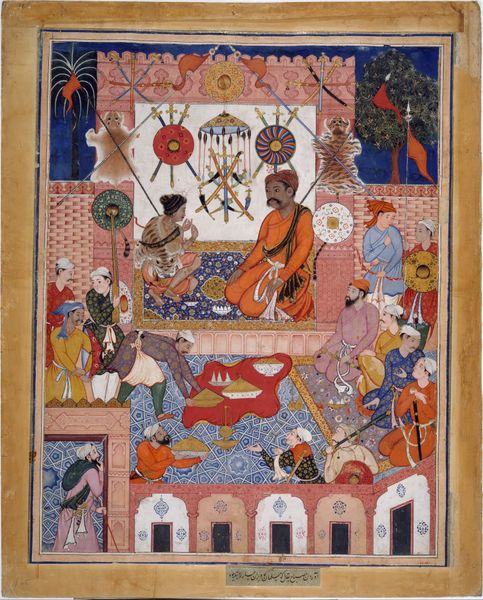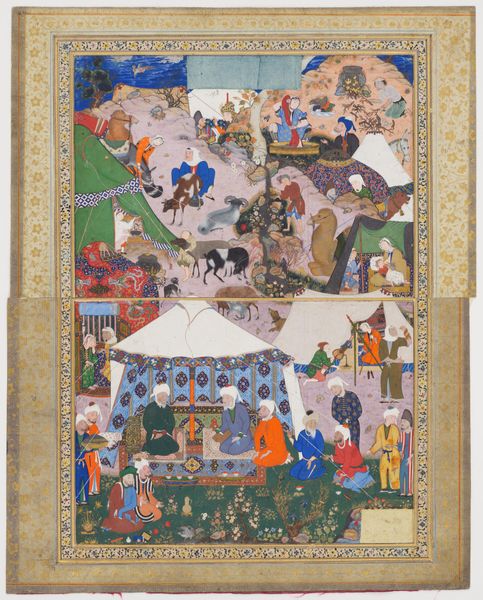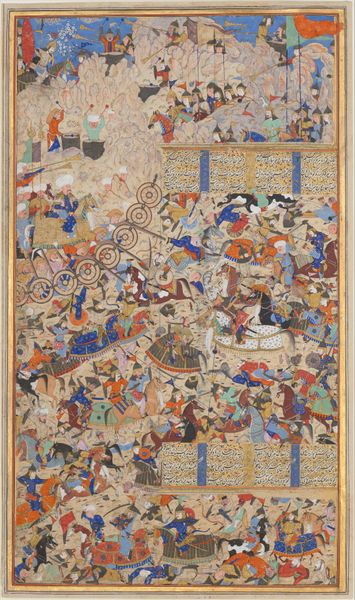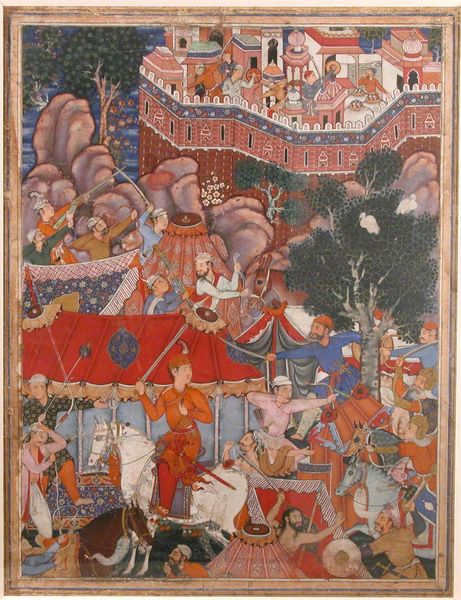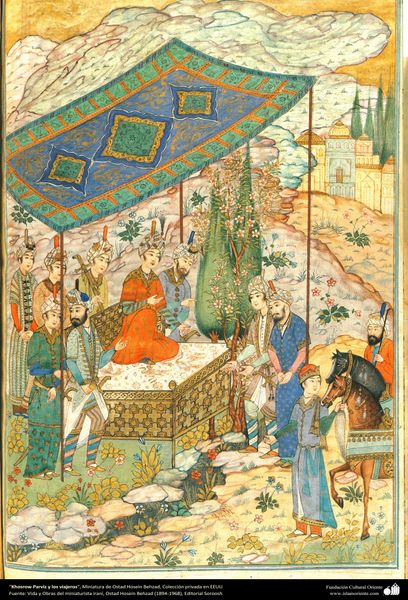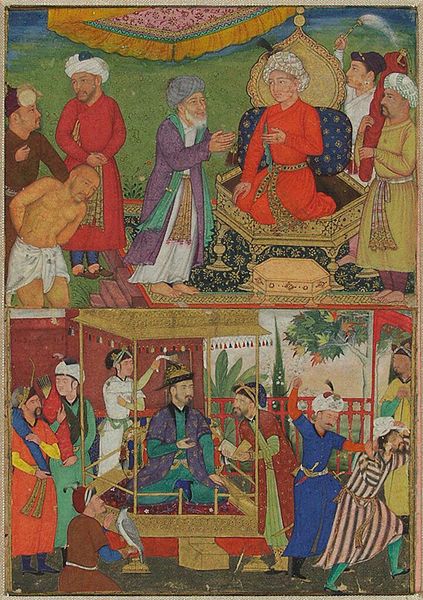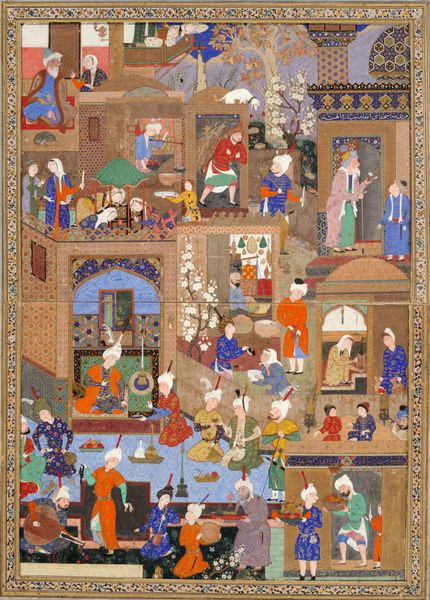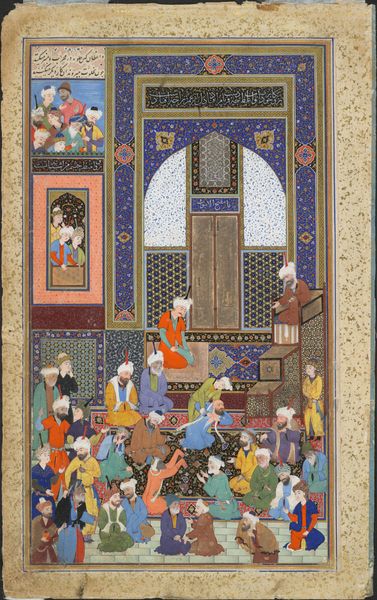
The Young Emperor Akbar Arrests the Insolent Shah Abu’l-Maali, page from a manuscript of the Akbarnama c. 1590 - 1595
0:00
0:00
painting, paper, watercolor, ink
#
portrait
#
narrative-art
#
painting
#
asian-art
#
bird
#
paper
#
watercolor
#
ink
#
horse
#
men
#
cityscape
#
islamic-art
#
watercolour illustration
#
sword
#
miniature
Dimensions: Image: 32 × 19.3 cm (12 5/8 × 7 9/16 in.); Outermost border: 33 × 19.6 cm (13 × 7 11/16 in.); Page: 34.4 × 20 cm (13 1/2 × 7 7/8 in.)
Copyright: Public Domain
Editor: This is “The Young Emperor Akbar Arrests the Insolent Shah Abu’l-Maali,” a painting on paper with ink and watercolor made around 1590-1595. There’s so much action in this small space! It looks almost chaotic, yet very controlled at the same time. What's your take on it? Curator: It's fascinating, isn’t it? I see this piece as a window into the complexities of power and social control in the Mughal empire. The painting documents the arrest, illustrating Akbar asserting his authority, but the ‘insolence’ is really interesting when viewed through today’s understanding of societal hierarchies. Who defines what ‘insolence’ is, and who suffers its consequences? Editor: That’s a good point. It does make me wonder what Shah Abu’l-Maali actually *did*. Is the artist trying to portray Akbar as a strong, decisive leader, or is there perhaps a subtle commentary on the potential for abuse within such power? Curator: Exactly! We need to consider the artist's position, Basawan, as well as the patron's. How does depicting this event contribute to Akbar's image, both then and now? Does it invite admiration, fear, or perhaps, a more nuanced understanding of his reign in relation to those he governed? Look at how Akbar is slightly raised above the crowd, physically setting him apart. Editor: I hadn’t thought about it that way. It seems I was too focused on the action to see the painting as a political statement. The choices about placement of figures and implied social messages, like a hierarchy, really shape the narrative. Curator: Precisely! It makes us think about the choices behind representation of individuals and classes throughout history. Power is not only exerted, but displayed, visualized. It's crucial to decode those displays. What have you learned, observing such context? Editor: Thinking about it in terms of power dynamics adds a whole new layer of meaning to the artwork. I see now that the artist wasn’t just depicting an event, but was actively participating in the construction of Akbar’s narrative and authority. It makes you consider art in any age, including our own.
Comments
No comments
Be the first to comment and join the conversation on the ultimate creative platform.
